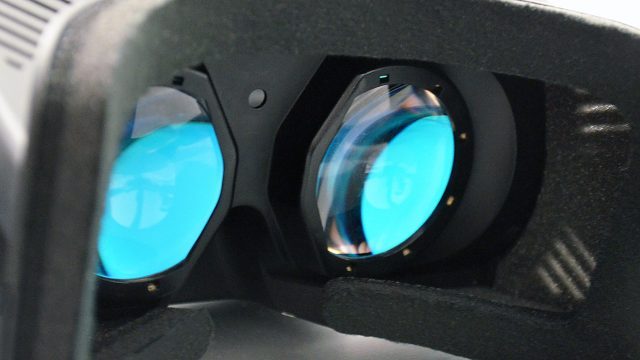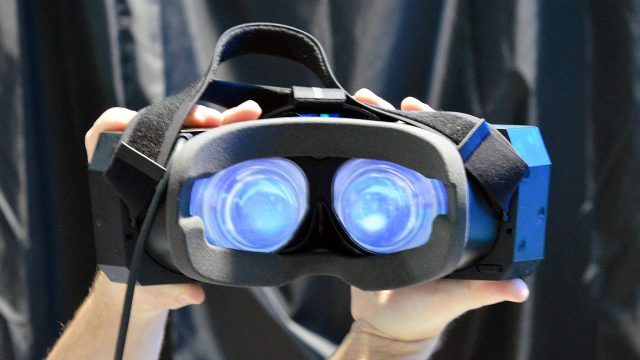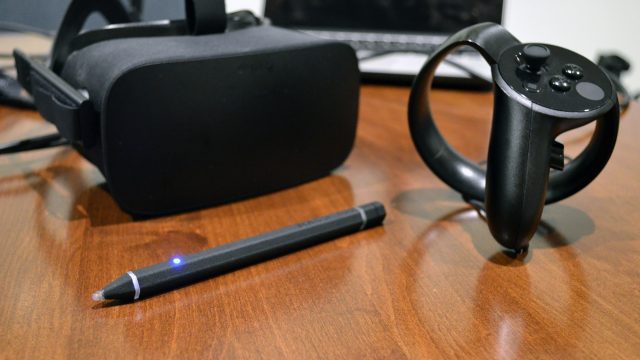Eye-tracking

Eye-tracking has been discussed often with regards to foveated rendering—the ability to render sharply at the center of your vision and less sharp in your peripheral vision, to save on processing power—but there’s so much more than eye-tracking can do to enhance the VR experience.
Beyond foveated rendering, a headset equipped with eye-tracking hardware could automatically detect which user is wearing a headset in order to instantly personalize the experience for that user, including the ability to make automatic adjustments like setting the headset’s IPD. Eye-tracking is also a key component in varifocal displays which, using the position of your eyes, can dynamically adjust their focus to eliminate the vergence-accommodation conflict and accurately simulate other effects like depth of field. Eye-tracking could also be used for foveated displays, like Varjo’s headset, which concentrates more of the display’s pixels at the very center of your vision (where it’s the sharpest). And there’s still much, much more that a headset equipped with eye-tracking could accomplish.
Companies like Tobii are now offering eye-tracking hardware and software to manufacturers and developers; Qualcomm is now offering Tobii’s solution in their VRDK headset. 7invensun is selling the aGlass eye-tracking development kit for Vive headsets. Fove is selling a development kit of their VR headset with inbuilt eye-tracking. Oculus recently showed off a new prototype seen for the first time with eye-tracking. Magic Leap has confirmed eye-tracking on their upcoming development headset. And even Apple is in the game, having reportedly acquired SMI, one of the former leaders in the eye-tracking space, and has drawn up patents implementing the technology.
Pimax “8K” Headset

While high-end consumer VR headsets available today offer a ~100 degree field of view, Pimax is hoping to take on incumbents with its “8K” VR headset which has a claimed field of view of 200 degrees and a 7,680 × 2,160 resolution. The headset has SteamVR Tracking built in and is planned to be compatible with SteamVR content.
The company ran a very successful Kickstarter campaign for the headset, raising $4.2 million, and went on to raise $15 million in venture capital following the crowdfunding. We’ve watched as the Pimax has made steady progress over the years on its ambitious headset, and while there have been some delays, the company recently said that they’re entering the headset’s mass production phase, and are on track to ship to Kickstarter backers by the end of the year.
If Pimax succeeds, the headset could set a new bar for immersion thanks to its ultra wide field of view and high resolution.
Massless

While there’s a handful of quality VR sculpting, painting, and design apps available today, all are restricted by their reliance on controllers which were meant for general input—like the Oculus and Vive controllers which have grips and triggers that are more suitable for replicating the feel of a gun than a pencil or a paintbrush. Massless wants to change that by developing a VR stylus for applications demanding greater accuracy.
Humans have a long history with tools, and when it comes to precision, the stylus is tried and true, thanks to its ability to be carefully manipulated by our fingers instead of just our wrists. The Massless stylus works by using an external camera to track the tip of the device, allowing you to draw in the air (or even against real surfaces) in a very natural way.
Massless hasn’t announce firm plans for release, but we had a chance to try the latest prototype earlier this year.
– – — – –
Next-gen AR and VR is steadily coming, but this certainly isn’t an exhaustive list. What are you looking forward to?





